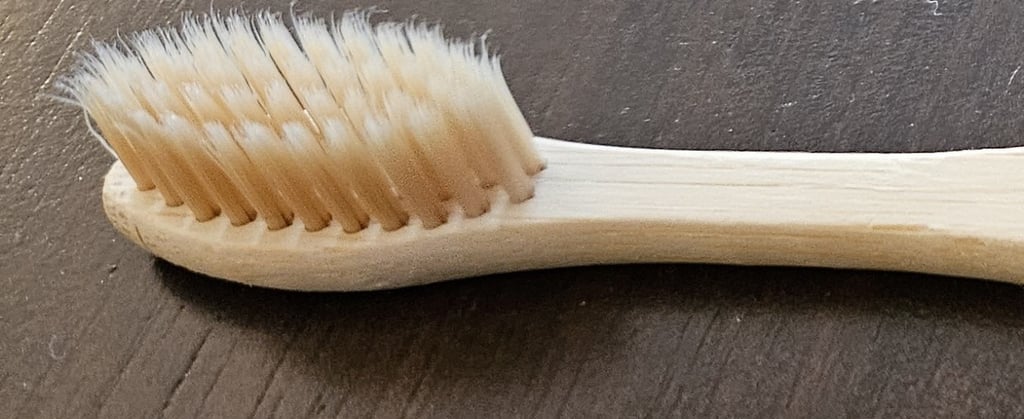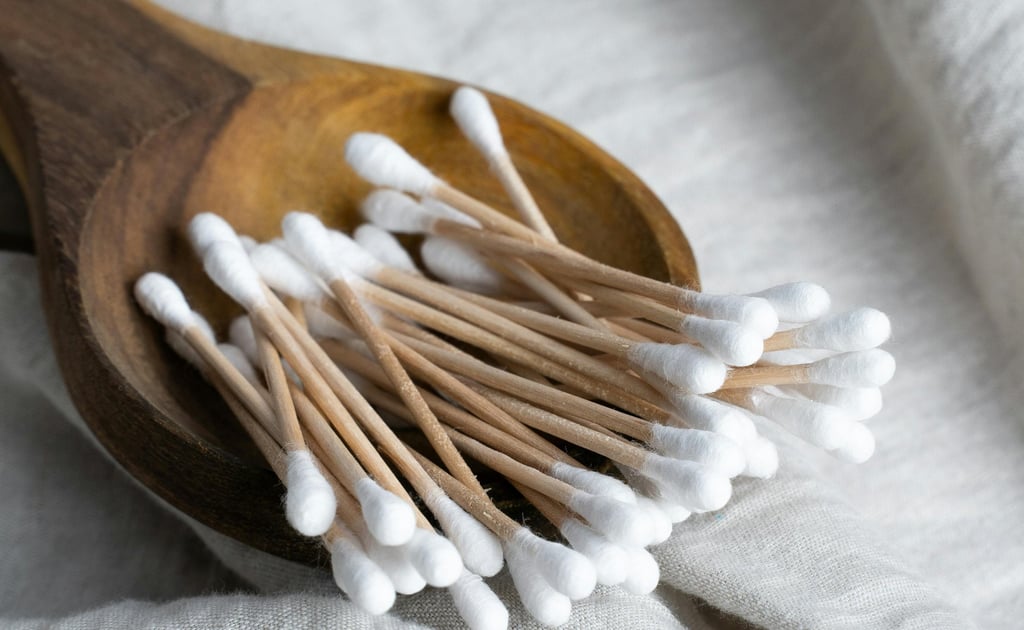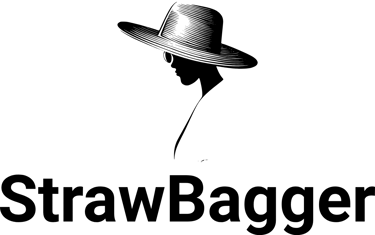Adopt a "strawbagger mindset!"

Go Green!
Welcome to StrawBagger.com!
Your home for useful tips and information on eco-friendly products and sustainable lifestyle activities
At StrawBagger.com we are committed to promoting sustainable living activities by providing useful tips and guidance for choosing eco-friendly products and adopting a sustainable lifestyle.
Straw, the Straw Hat and the Straw Bag
Inspired the coinage of the word: "strawbagger"






Hello friends! I am your host, Ken Pantin. Welcome to my home!
In 2023, I coined the word "strawbagger" to describe a person who consciously contributes to man's attempts to save our planet.
Some may still ask:
"What is a strawbagger?"
"Who is a strawbagger?"
Here is my simple definition of the word:
A 'Strawbagger' is someone who is mindful that the way we live can sometimes benefit or harm the earth or its inhabitants, and who genuinely tries to live in a way that minimizes any negative impact of their behavior on the planet.
So, what does "strawbagger" mean?

Sustainable Living for All!
Let's Explore the Diverse Horizons of Sustainable Living for a Better Tomorrow.
Let's do what we can to care for our wonderful planet! Adopt a "strawbagger" mindset!

Join the "Strawbagger Revolution"!
Reduce!
Reuse!
Recycle!
Embrace a Sustainable Lifestyle!
What is The Strawbagger Revolution?
The Strawbagger Revolution is a call to live with purpose, reduce waste, and make mindful choices that protect people and the planet - one small, meaningful step at a time.
The Strawbagger Revolution is a movement for everyone who believes that small, mindful choices can add up to big, positive changes for our planet.
Rooted in the idea of being a strawbagger (someone who lives with intention, reduces waste, and carries their values into every aspect of life), it is about rejecting the throwaway culture and embracing a sustainable, thoughtful way of living.
From carrying a reusable bag or bottle to choosing eco-friendly fabrics, reducing your carbon footprint, and supporting ethical businesses, the Strawbagger Revolution invites you to take ownership of your impact and become part of the solution.
By joining the Strawbagger Revolution, you’re not just making greener choices for yourself; you’re inspiring others and contributing to a global effort to protect the Earth for future generations.
It is a call to action for anyone who cares about clean oceans, fair labor practices, healthy communities, and preserving nature’s beauty.
Together, we can shift the tide toward sustainability, one simple, everyday act at a time.
So join the movement, lead by example, and show that living responsibly doesn’t mean giving up comfort or style; it means living with purpose.
A movement to inspire mindful, sustainable living.
Encourages small, everyday actions that reduce waste and harm.
Promotes eco-friendly habits, ethical choices, and intentional consumption.
Empowers individuals to protect the planet and influence positive change.
Shows that sustainability can be simple, stylish, and accessible to all.
The Strawbagger Revolution, in Brief.






This young woman is sporting a wicker handbag, probably made of bamboo. Just so you know, however, that she was given a plastic spoon for her ice cream. A wooden spoon, or even an edible spoon, would have been a more eco-friendly (sustainable) option. Also, her chair is plastic. Again, a wooden, metallic, or wood/metal chair would have been more earth-friendly. I wonder if her dress is made of a sustainable fabric?

Adopt a strawbagger mindset early in life!









We are Strawbaggers!










The farmer
The baker
The cyclist
The skateboarder
The youth
The free-spirited
The young at heart
The student
The next generation
Table of Contents


Try cycling! It is good for your health and good for the environment.

Buffalo!
The American Bison (or buffalo) has been an important player in American history. This animal has also had a major impact on the country's ecosystem. Before Europeans arrived, there were estimated to be between 30 to 60 million bison roaming North America. Native American Plains tribes heavily relied on bison for food, clothing, and shelter. However, in the 19th century, the mass slaughter of bison by settlers and the U.S. government, driven by westward expansion, nearly wiped them out. The American buffalo is slowly returning to the plains thanks to vigorous conservation efforts. Today, bison play a crucial role in preserving native grasslands and symbolize American heritage and successful conservation efforts.
You may get more information on this majestic creature on the National Wildlife Federation's website.
What is a Sustainable Lifestyle?
Why all the fuss? Why should I care?
Sustainable living is broad, complex, and relevant to all of us.
Living sustainably begins with individual actions.
We can make thoughtful, everyday choices—like reducing waste, conserving energy, and supporting eco-friendly businesses—that collectively contribute to a healthier planet.Our goal is to help nurture the Earth.
By adopting a sustainable lifestyle, we strive to protect natural resources and promote environmental balance, ensuring that both current and future generations can live safely and harmoniously.Sustainability supports both people and the planet.
A sustainable lifestyle encourages equity, resilience, and shared well-being for humans and the ecosystems we depend on.Larger-scale change is also crucial.
While individual efforts matter, governments and non-governmental organizations (NGOs) play a major role in driving systemic change through policies, education, innovation, and large-scale environmental programs.Working together creates real impact.
The combined efforts of individuals, communities, institutions, and global organizations are essential to building a more sustainable and just future for all.
According to the UN Environment Programme, some of the specific goals that sustainable living addresses are:
The reduction of waste and pollution,
The reduction of carbon dioxide and other greenhouse gas emissions,
Minimizing our use of (non-renewable) natural resources,
The promotion of socio-economic equity worldwide.

World fisheries face significant challenges due to overfishing.

Many marine ecosystems are experiencing the harmful effects of overfishing, with numerous fish stocks depleted or overexploited.
World fisheries face significant challenges due to overfishing. Many marine ecosystems are experiencing the harmful effects of overfishing, with numerous fish stocks depleted or overexploited.
This imbalance disrupts the delicate ecological relationships in the oceans, leading to the decline of non-target species, habitat degradation, and alterations in food chains.
Overfishing threatens fish populations and has far-reaching consequences for global ecosystems. This includes the decline of coral reefs, loss of biodiversity, and disruptions in the balance of marine environments. Ultimately, it affects human livelihoods and food security.
Sustainable fisheries management is critical to mitigate these impacts and ensure the long-term health of our oceans.
Find more information at NOAA Fisheries.
Climate versus Weather
NOAA - The North American Oceanic and Atmospheric Administration does a great deal of research on global climate and weather issues. They have found that many people ask: "What's the difference between climate and weather?"
While there is a detailed, scientific answer to this question, NOAA has provided some simplified sayings aimed at answering this question in layman's terms. Here is an excerpt from NOAA's website:
"Some people have come up with sayings to help explain the difference between weather and climate. Here are a few:
Climate is what you expect; weather is what you get.
Weather tells you what to wear each day; climate tells you what to have in your closet.
Weather is the chocolate caramel truffle, climate is the whole box of chocolates."
One might also say that weather is a subset of climate!
Well, there are many answers to this question. However, the primary answer is that the way human beings live (and have lived) on planet Earth has had a major, negative impact on the planet's ability to support us into the very distant future.
Some of the detrimental effects of man's activities on the planet include:
The multiple side effects of climate change
The rapid depletion of non-renewable natural resources
Pollution of our physical environment (air, oceans, rivers, and land)
The mal effects of the generation of large amounts of waste.
The many socioeconomic inequities across the globe
Why Should I Live Sustainably?
United Nations research reports have indicated that:
"Climate Change is the defining issue of our time, and we are at a defining moment.
From shifting weather patterns that threaten food production to rising sea levels that increase the risk of catastrophic flooding, the impacts of climate change are global in scope and unprecedented in scale.
Without drastic action today, adapting to these impacts in the future will be more difficult and costly."

Sea birds play a vital role in the world's ecosystems, particularly in marine environments.

Seabirds play a vital role in the world's ecosystems, particularly in marine environments. They are essential for nutrient cycling, as they transport nutrients from sea to land through their guano (excrement), enriching coastal ecosystems. Seabirds also help control populations of marine organisms by preying on fish and invertebrates, contributing to the regulation of food webs. Their presence in various habitats can indicate the health of marine ecosystems, making them valuable indicators of environmental changes and ecosystem conditions. Seabirds serve as key contributors to the balance and functioning of coastal and marine ecosystems.
Think, for instance, about reducing your energy use at home and at work (and other places), perhaps by changing some or all of your incandescent light bulbs to LED bulbs.
Reduce, reuse, and recycle the resources available in your day-to-day work.
Just look into the different environmentally friendly transportation modes available, such as taking a bus, biking, and walking. This can reduce tonnes of carbon emissions.
Buy local! Particularly food, of course! Buy organic foods as much as possible. Local foods need less transportation energy than foods flown in or hauled from far away. Over time, locally grown food reduces carbon emissions.
Water is a vital resource. Don't waste water (even if you don't pay for it!). Use water-saving devices at home, at work, in the garden, etc. Take shorter showers and fix leaks promptly.
Plant trees, garden, support reforestation where and whenever possible, for it will certainly help with carbon sequestration and biodiversity.
Take a good, hard look at a minimalist lifestyle to minimize environmental impact.
Educate yourself and others about environmental and sustainability issues.
Advocate for policies and practices that promote local, national, and global sustainability. This is a gigantic global challenge that calls for all hands on deck.
Video courtesy: Robin Greenfield, and Baby Steps to Zero Waste

Virtually, every choice we make—at home, at work, in our communities—has an impact on the environment.
While the scale of the climate crisis can feel overwhelming, the power to drive meaningful change often begins with small, intentional actions in our daily lives.
From the energy we use to the food we buy, there are countless opportunities to reduce our carbon footprint and protect the natural world around us.
Living more sustainably doesn't require dramatic sacrifices—it simply means making thoughtful decisions that align with a healthier planet.
The steps may be simple, like swapping light bulbs, taking shorter showers, or choosing local produce, but their collective effect is profound.
The following ideas are practical ways you can take action, inspire others, and contribute to a more sustainable future, one mindful step at a time.
The video, shown below, gives us a glimpse into the life of a Montreal family devoted to living by "Zero Waste" principles.
The family certainly provides a few practical tips on how we can reduce waste in our lives.
Take a look at the sustainable products available at ZeroWasteStore.com
So, How Can I Help the Planet?
According to "The Nature Conservancy, "A carbon footprint is the total amount of greenhouse gases (including carbon dioxide and methane) that are generated by our actions."

Take the First Steps on Your Sustainable Lifestyle Journey.
Here are just a couple of light examples of sustainability-rich actions you can take.
I started my strawbagger, sustainability journey with the simple, inexpensive, and effective bamboo toothbrush. To date, I have no regrets! Here's my current brush in the photo below. Ken P.


Step 1. Begin your strawbagger journey today!
Why not start with a simple and inexpensive bamboo toothbrush?
For additional insight into this product, take a look at the write-up below: "The Pros and Cons of Using a Bamboo Toothbrush".


A bamboo toothbrush is a popular choice for those looking to adopt a more sustainable lifestyle.
The main advantage lies in its use of renewable, biodegradable material for the handle—bamboo, which grows quickly with minimal water and without the need for pesticides. At the end of its life, the handle can usually be composted or disposed of in a way that minimizes environmental impact, unlike conventional plastic toothbrush handles that can persist in landfills or oceans for centuries. Additionally, bamboo has natural antimicrobial properties, adding an extra hygienic benefit.
Using a bamboo toothbrush is a small but meaningful way to reduce your reliance on petroleum-based plastics and help decrease plastic waste.
However, bamboo toothbrushes are not without drawbacks.
Many bamboo toothbrushes still use nylon or synthetic bristles, which are not biodegradable and must be removed before composting the handle. The production and transportation of bamboo (often grown and manufactured overseas) can also carry a carbon footprint that offsets some of its benefits, depending on sourcing practices.
In contrast, plastic-handled toothbrushes, while environmentally harmful if disposed of improperly, are lightweight, cheap, durable, and often come in designs that are more effective for specific dental needs (such as ergonomic shapes or powered models).
In summary, bamboo toothbrushes offer an environmentally friendlier alternative to standard plastic toothbrushes, particularly because of their renewable, compostable handles. However, they are not a perfect solution, as bristle materials and transportation emissions still pose challenges. Consumers weighing their options should consider both the environmental impact and their personal dental needs when choosing between bamboo and plastic toothbrushes.
The Pros and Cons of Using a Bamboo Toothbrush
Step 2. Then, when you need a new T-shirt, opt for one made from organic cotton or recycled cotton. A shirt or dress made of this material is also a good choice.




Step 3. You might then want to invest in one or more reusable, non-plastic water bottles. There is a large variety of these bottles in the marketplace.




Step 4. The next action could be to acquire a 100% cotton denim jacket to complement your organic cotton or recycled cotton T-shirt.




Step 5. Now, how about the good old cotton swab? These are now available as bamboo cotton swabs. A more sustainable alternative to the traditional swabs. Could you try these next?
One drawback I have seen, so far, is that the bamboo sticks are quite brittle, so they tend to snap if too much pressure is applied to them.


Bamboo cotton swabs are a more eco-friendly alternative to traditional plastic-stemmed swabs and are a good fit for a sustainable lifestyle. The stems are made of bamboo—a fast-growing, renewable resource—and the cotton tips are biodegradable, making the entire product compostable under the right conditions.
By switching to bamboo swabs, consumers can help reduce plastic waste that often ends up in landfills, waterways, and oceans, where plastic cotton swabs are a notable source of microplastic pollution. They offer the same convenience and functionality as conventional swabs while aligning better with environmentally conscious habits.
On the other hand, bamboo cotton swabs can have some downsides. They are often slightly more expensive than plastic swabs, and while compostable, they still require proper disposal to ensure they break down rather than contributing to waste streams.
Compared to paper-stemmed cotton swabs, which are also biodegradable, bamboo swabs are sturdier but may carry a slightly higher environmental footprint if sourced unsustainably or shipped long distances. Plastic swabs remain the least sustainable option, as they are non-biodegradable, contribute to plastic pollution, and are increasingly being banned in some countries due to their environmental harm.
Overall, bamboo cotton swabs strike a good balance between functionality and sustainability, outperforming plastic swabs in terms of environmental impact while offering more durability than paper alternatives.
For those committed to reducing single-use plastic in their daily routine, they are a simple, effective swap, but conscious sourcing and proper disposal remain key to maximizing their eco-friendly potential.
The Pros and Cons of Using Bamboo Cotton Swabs
Step 6. Wherever your sustainability journey takes you, try to maintain a recycling mindset. Recycle following your local municipal, city, and state laws. Minimize your use of disposable plastic. Jump on the composting bandwagon!
Be guided by the mantra: "Reduce, Reuse, Recycle".





You're on Your Way!
Stay on this course and, little by little, step by step the sustainable lifestyle will become the norm for you.

Video courtesy: Christof Middeke

Wait! There's more!
Explore the many aspects of sustainability.
Click on the links below to delve more deeply into the world of sustainability.
